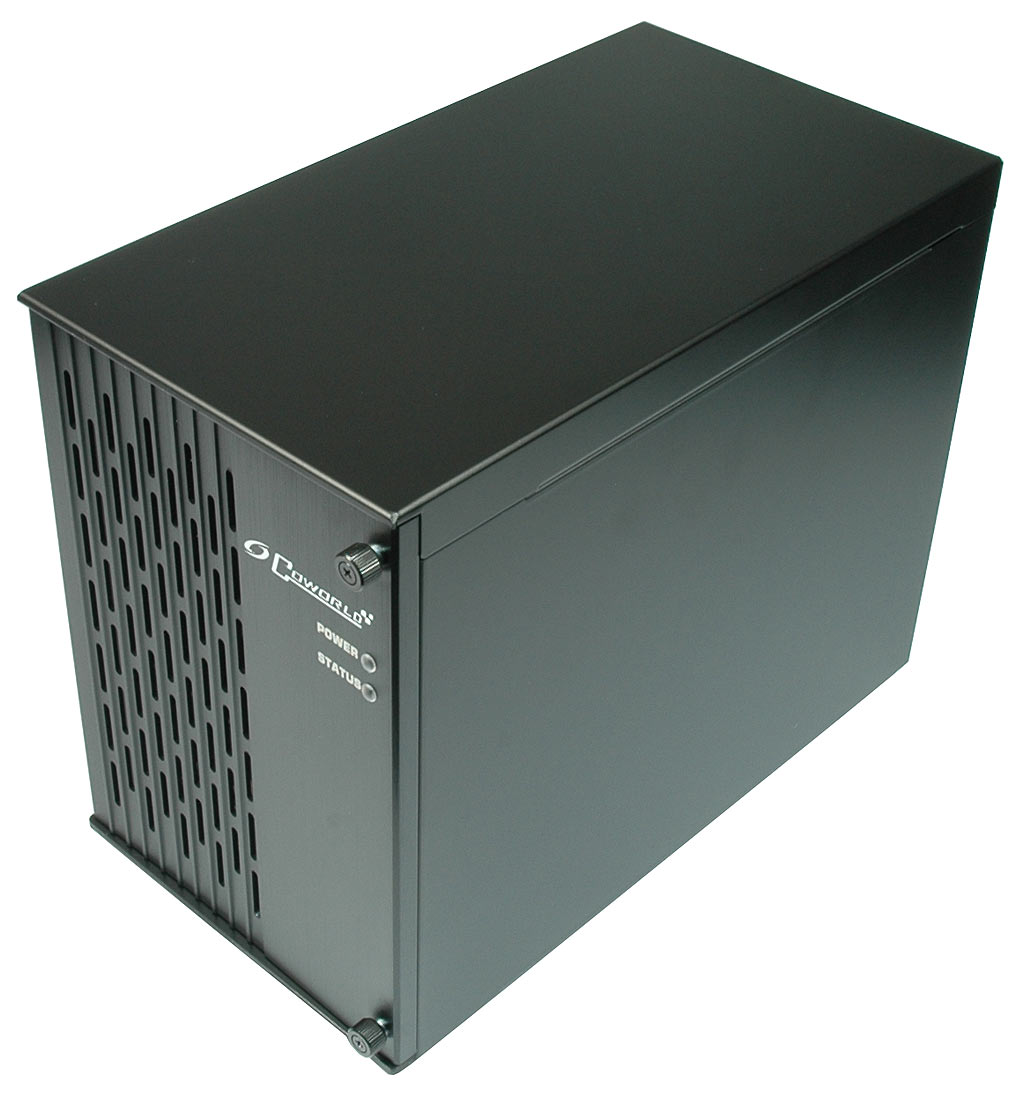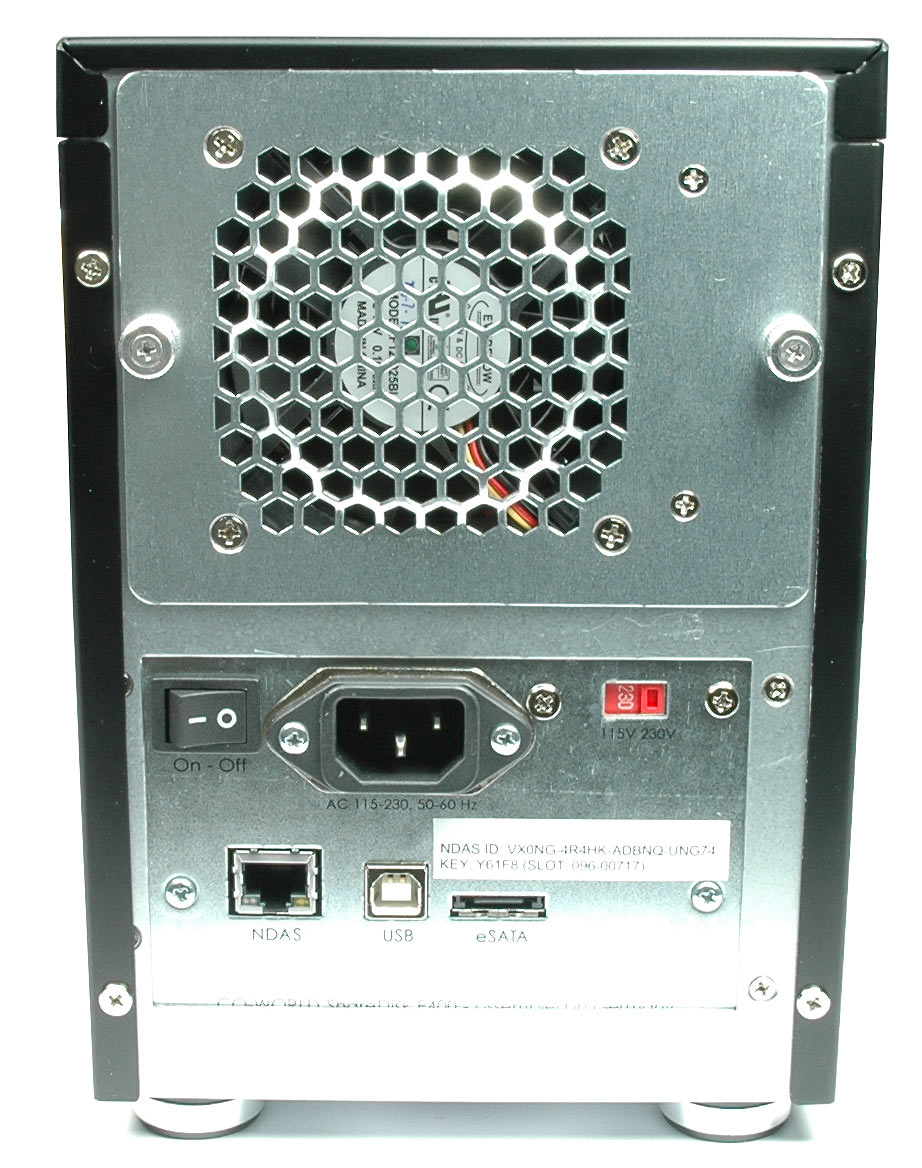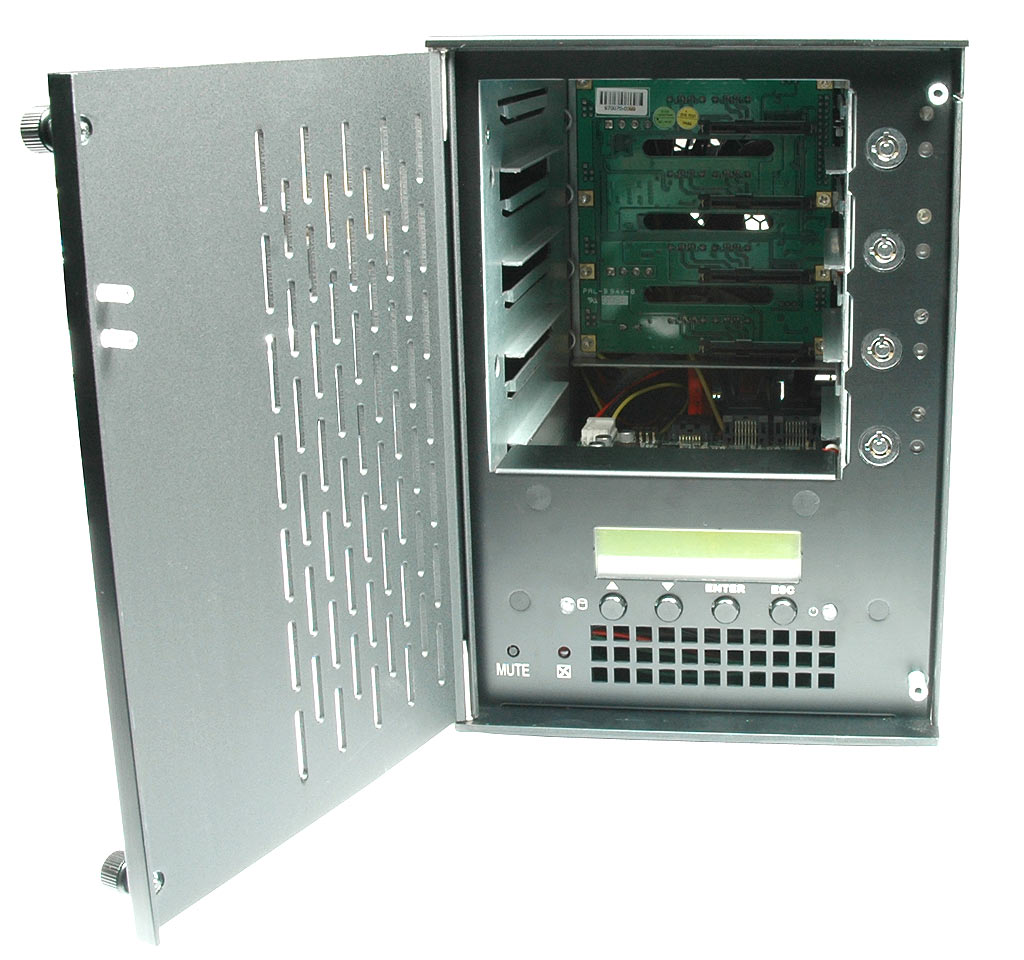Network Storage: Three NAS Units Rounded Up
Co-World Sharedisk Pro 400
Special Features
The ShareDisk Pro 400 not only distinguishes itself from the other NAS systems reviewed here by virtue of its numerous ports and connectors, but also through its use of Network Directed Attached Storage (NDAS) technology. That means it uses the so-called lean packet exchange (LPX) protocol to communicate with computer clients, rather than the more typical TCP/IP used for data transport in conventional NAS devices.
Thus, network device identification for this device comes from a device ID (usually printed on the back of such devices) rather than the more typical and arbitrarily assigned IP address. LPX confers the advantage of higher network data transfer rates than TCP/IP can deliver, thanks to its decreased overhead.
Another significant difference between NDAS and more conventional NAS devices is that the ShareDisk Pro 400 acts just like a normal internal hard disk (albeit across the network, if not directly attached to a single PC using eSATA or USB). This lets users format the ShareDisk 400 with whatever file system they might like, rather than the EXT3 file system normally used on most network-attached storage. Also, the ShareDisk Pro 400 can support file access using aliases or other special file handles, which NAS does not permit.
NDAS: Faster, But Also Potentially More Problematic
Use of the LPX protocol does entail some concessions, too. For one thing, any host computer that wishes to access the NDAS device must install an LPX protocol driver. This can sometimes lead to problems. Thus, for example, we could only achieve a working NDAS connection on one of our test machines that came equipped with both Realtek and Marvell network interfaces when we turned off the Realtek circuitry. As long as we left both interfaces up and running, our test machine would blue screen whenever it tried to load the "ndis.sys" driver. Except for this glitch, we had no problems with the Co-World ShareDisk Pro 400.
Construction and Form Factor
Get Tom's Hardware's best news and in-depth reviews, straight to your inbox.
Currently available only in Europe, the Co-World ShareDisk Pro 400 goes for the equivalent of $1,250. For the money, it is a solid NDAS subsystem that includes four hot-swappable SATA drive bays, and features high-quality, well-designed construction throughout. The rear of this device features one USB 2.0, one eSATA, and an RJ-45 for GbE, an on-off switch, a voltage selector, and a standard three-prong power port. Thanks to the various connections and options it supports, users can take advantage of flexible settings and configurations and set installation regions separately on a per-device basis.
Co-World also disclosed some future plans to us--namely that the ShareDisk Pro 400 is undergoing a makeover, so that a separate voltage selector won't be necessary, as its internal components will be able to sense and configure their own input requirements directly with the built-in power supply. Also, Co-World plans to add an RS-232 connector to the device to better enable external monitoring of this storage system.
Features and Functions
The front panel of the device includes an LCD display that provides status information about its current status, RAID configuration, temperature, and fan speed. Four buttons beneath that display control selection and configuration of a RAID setup for the ShareDisk Pro 400. Menu navigation is simple and straightforward and configuration setup uncomplicated. RAID 0, 10, 5, and 5+Spare modes are supported.
Power Consumption
A ShareDisk Pro 400 consumes about 43 W under normal usage when equipped with four hard disks. During a RAID rebuild, power consumption climbs to around 53 W.
-
cknobman If you want something simple to share data at home I cant figure out why anyone would buy a cheap NAS that gives less than 15 mbps or something outrageous costing over $700. Why not build your own using low power cpu that would perform much better than the cheap NAS devices and still come in hundreds of dollars less than the overpriced NAS devices?Reply -
yourhighness cknobmanIf you want something simple to share data at home I cant figure out why anyone would buy a cheap NAS that gives less than 15 mbps or something outrageous costing over $700. Why not build your own using low power cpu that would perform much better than the cheap NAS devices and still come in hundreds of dollars less than the overpriced NAS devices?Reply
THIS
-
yourhighness More on this Topic....?Reply
Hitting the link for the last page just gives me a blank pop-up box....
Using Chrome. -
yourhighness yourhighnessMore on this Topic....?Hitting the link for the last page just gives me a blank pop-up box....Using Chrome.Grabbing the link from the drop down works fine, but from the conclusion page going to the next page is broken.Reply -
theJ yourhighnessMore on this Topic....?Hitting the link for the last page just gives me a blank pop-up box....Using Chrome.Reply
That's all it is. More ads so they can pay the bills. -
If you want to build your own rock-solid RAID NAS, and do so with cheap old hardware, check out my guide on building a Linux RAID-5 NAS. I wrote this guide so even someone who has never worked with Linux before can get it up and running, and maintain it, very easily! Hope this helps someone out there!Reply
Go to my site at: http://cobraftp.serveftp.com and click on Linux.. then at the top is the PDF, which is labeled "Linux RAID-5 How-to Guide" -
how did you exclude the new Readynas NVX? seems kinda silly without that leader in both functionality and performance involvedReply



